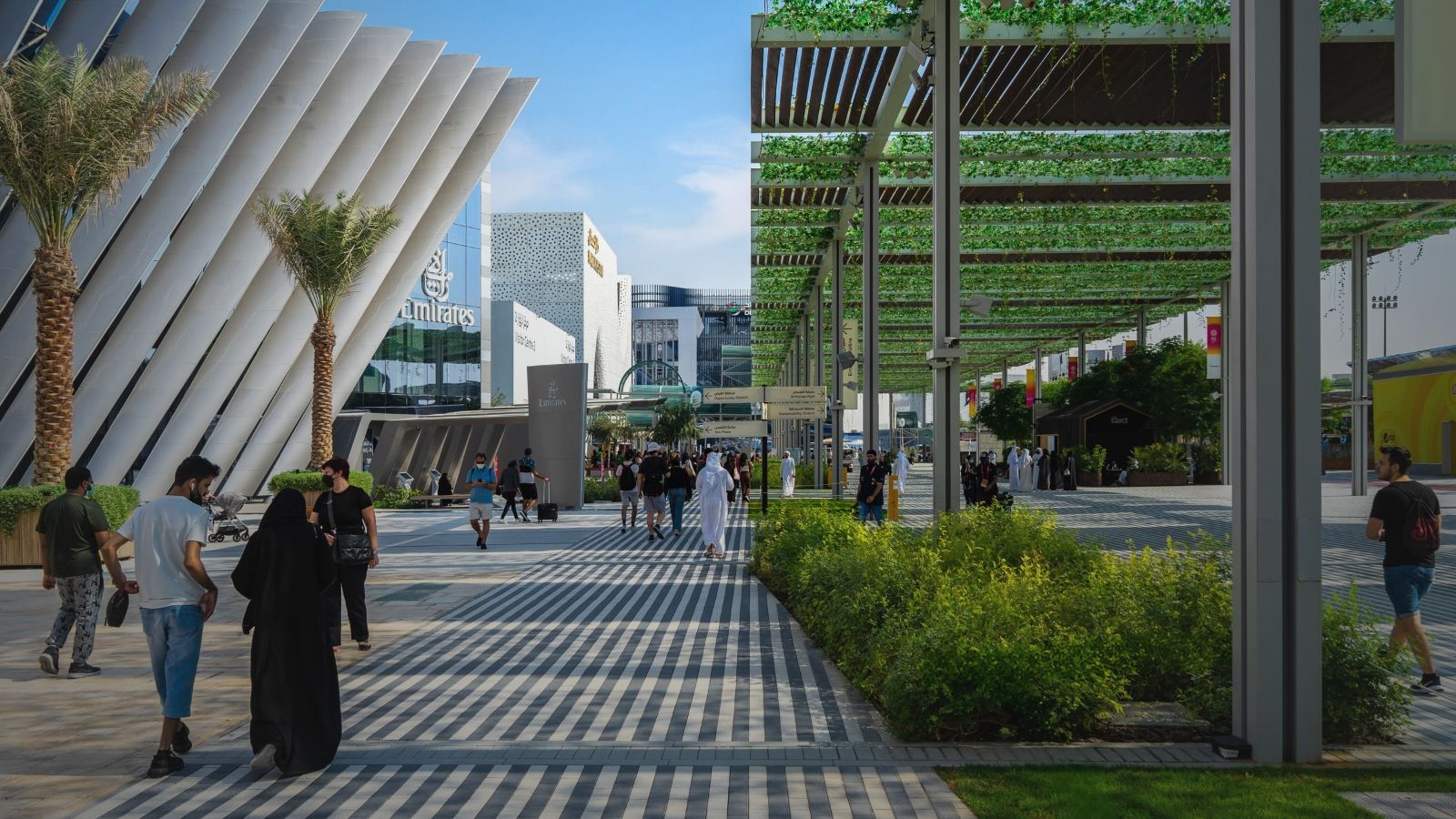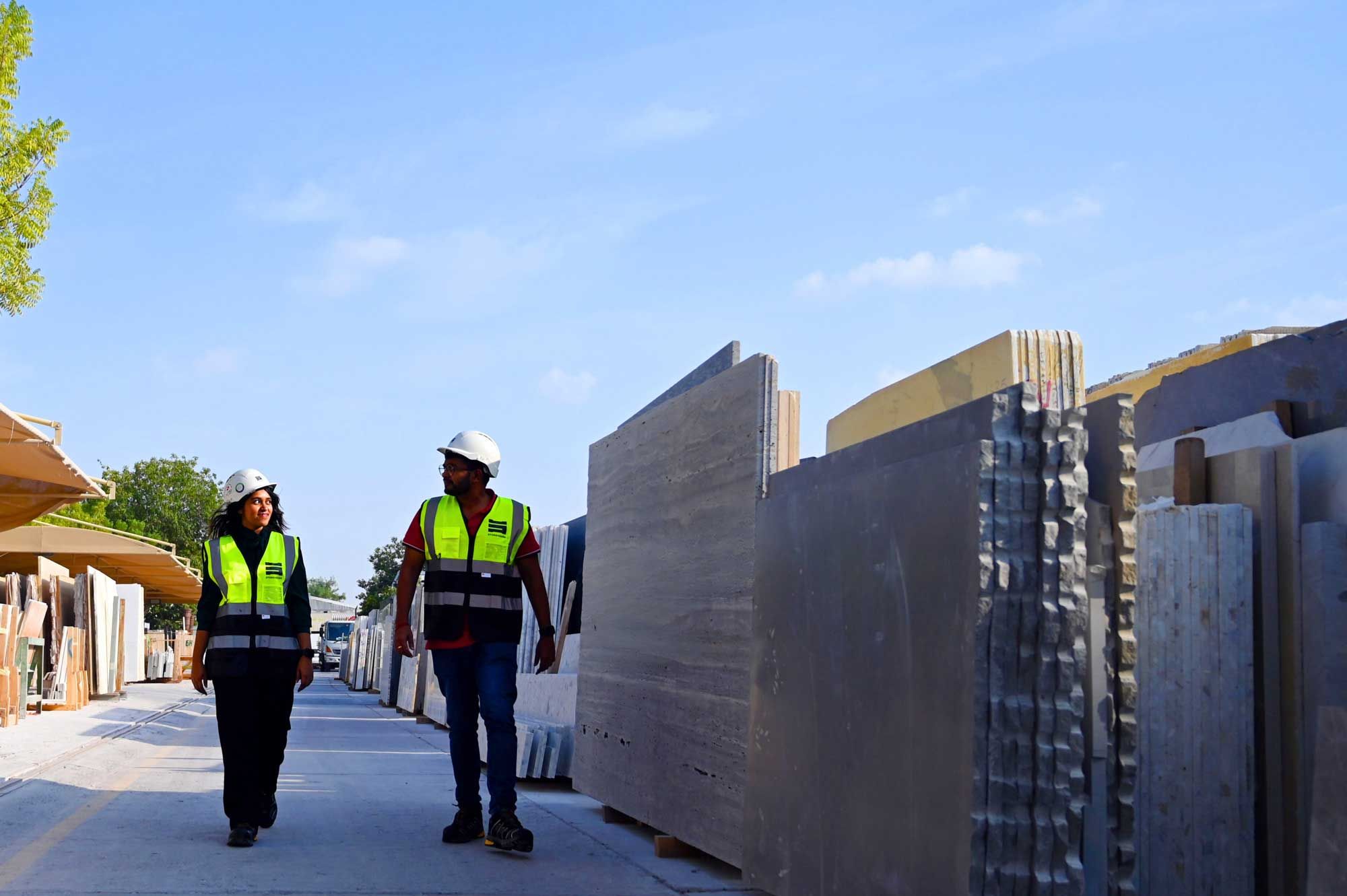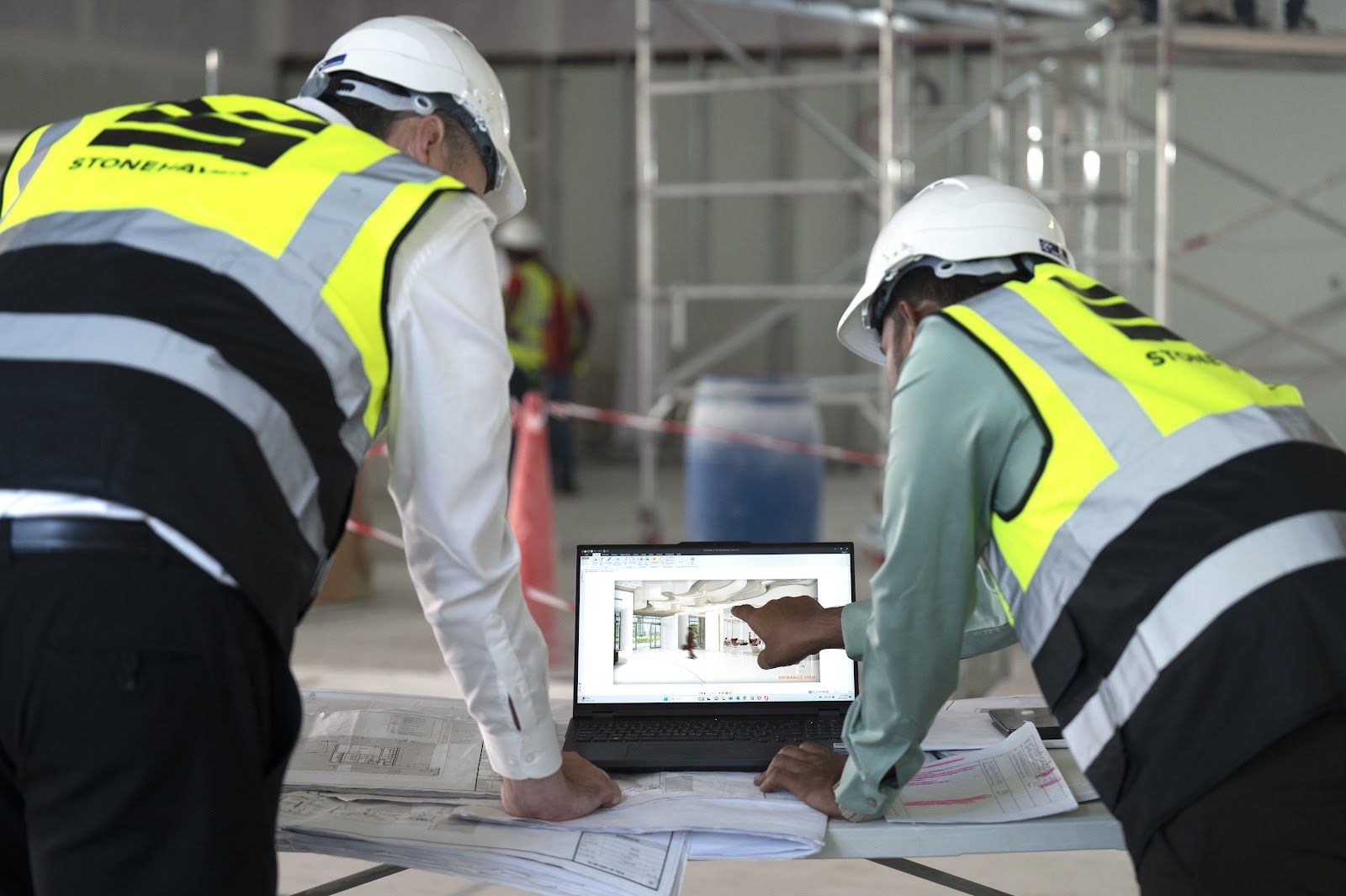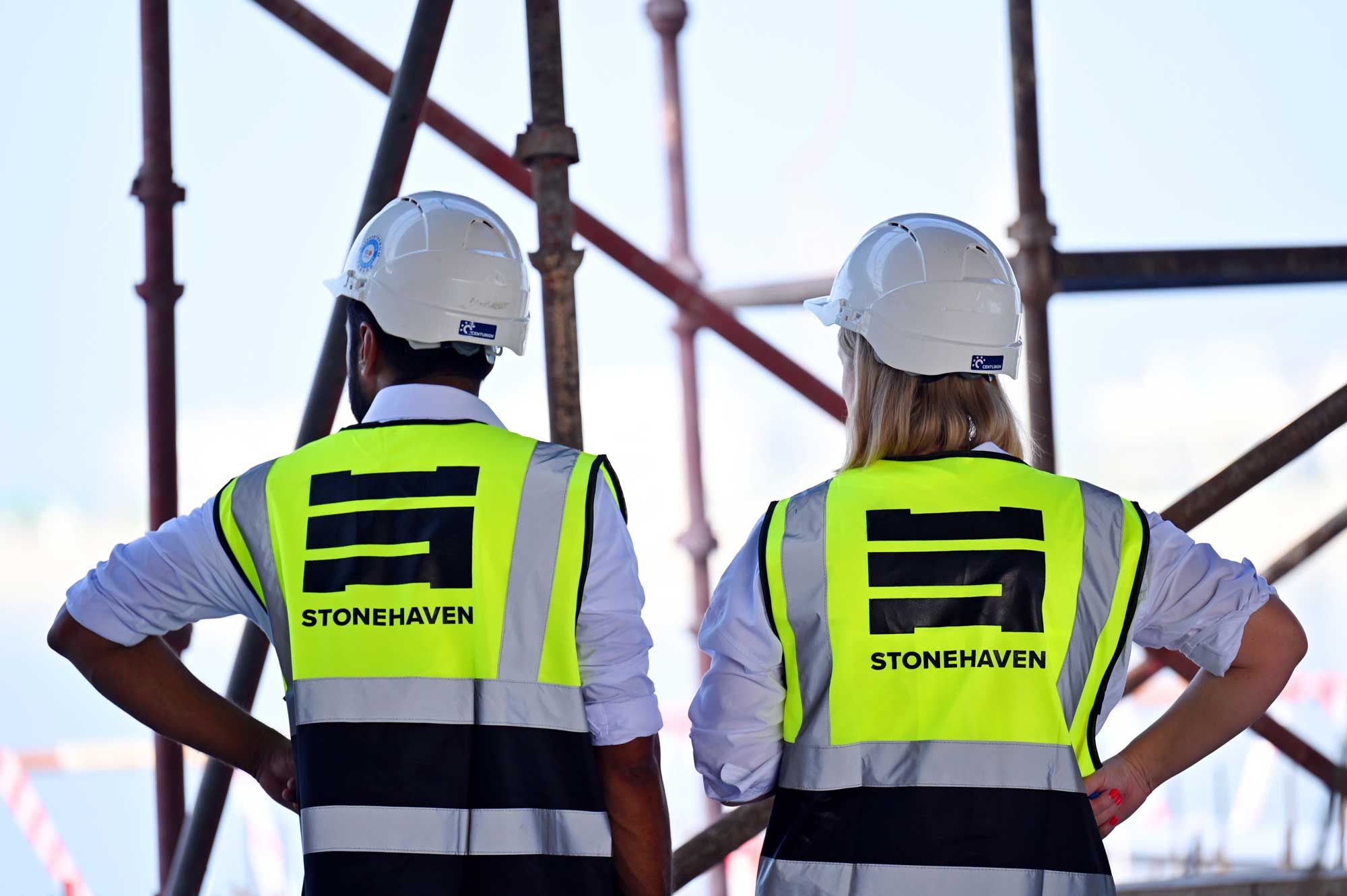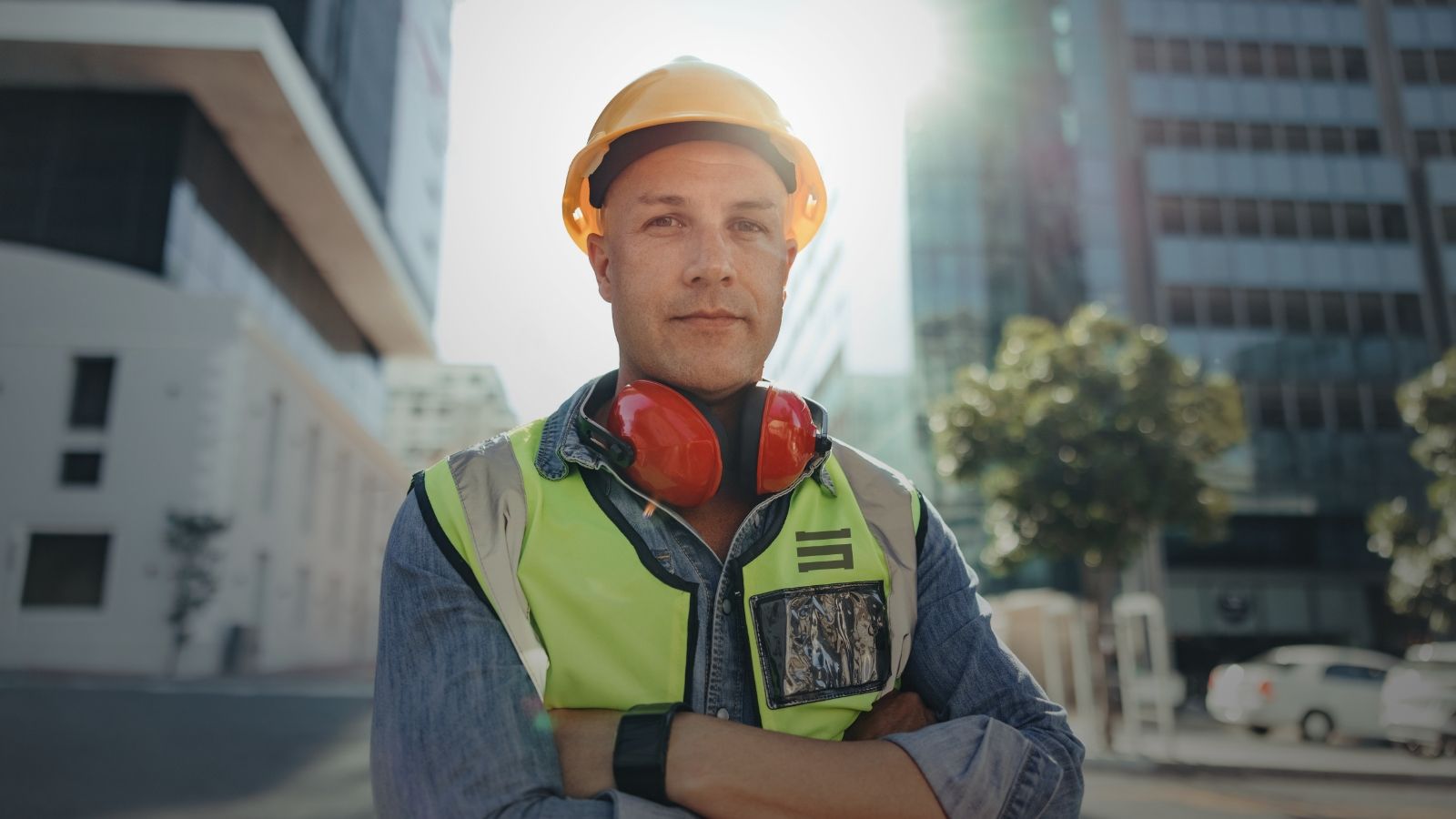The transformation of the Middle East’s skyline, with its record-breaking skyscrapers, expansive highways, and cutting-edge infrastructure, is not just a testament to ambition, but to the mastery of civil and structural engineering. Behind every elevated metro line in Dubai and every desalination plant in Abu Dhabi lies the precise execution of civil engineering: a discipline that blends technical expertise, site coordination, and innovative problem-solving to drive the region’s rapid growth.
Whether you're exploring civil engineer job descriptions, looking into trends, or curious about how civil engineering firms are shaping the UAE’s urban future, this guide offers a comprehensive look at the challenges and opportunities within the field. With a special focus on the UAE, particularly Dubai, the region’s hub of architectural innovation, this article draws on real-world insights to highlight the people building the future, one structure at a time.
What is Civil Engineering in Construction All About?
Civil engineering in construction plays a central role in shaping the built environment. It involves the planning, design, and delivery of essential infrastructure, including roads, bridges, drainage systems, and urban developments. Across the Middle East, civil engineers are not just creating buildings. They are building the foundations of fast-growing cities and economies.
In the UAE, the engineering landscape is shaped by extreme climate, coastal conditions, and unprecedented growth. With temperatures often exceeding 45°C recently and high groundwater salinity along the coast, projects demand specialised material selection and innovative design strategies. Dubai's construction sector is projected to reach approximately AED 189.59 billion (USD 51.6 billion) by the end of 2025, reflecting a 6.2% annual growth rate.
Concurrently, the city's population is expected to surpass 4 million by the third quarter of 2025, driven by a significant influx of residents and a robust real estate market. Saudi Arabia’s Vision 2030 adds further momentum through mega-projects like NEOM and The Line, which require large-scale civil and structural engineering solutions.
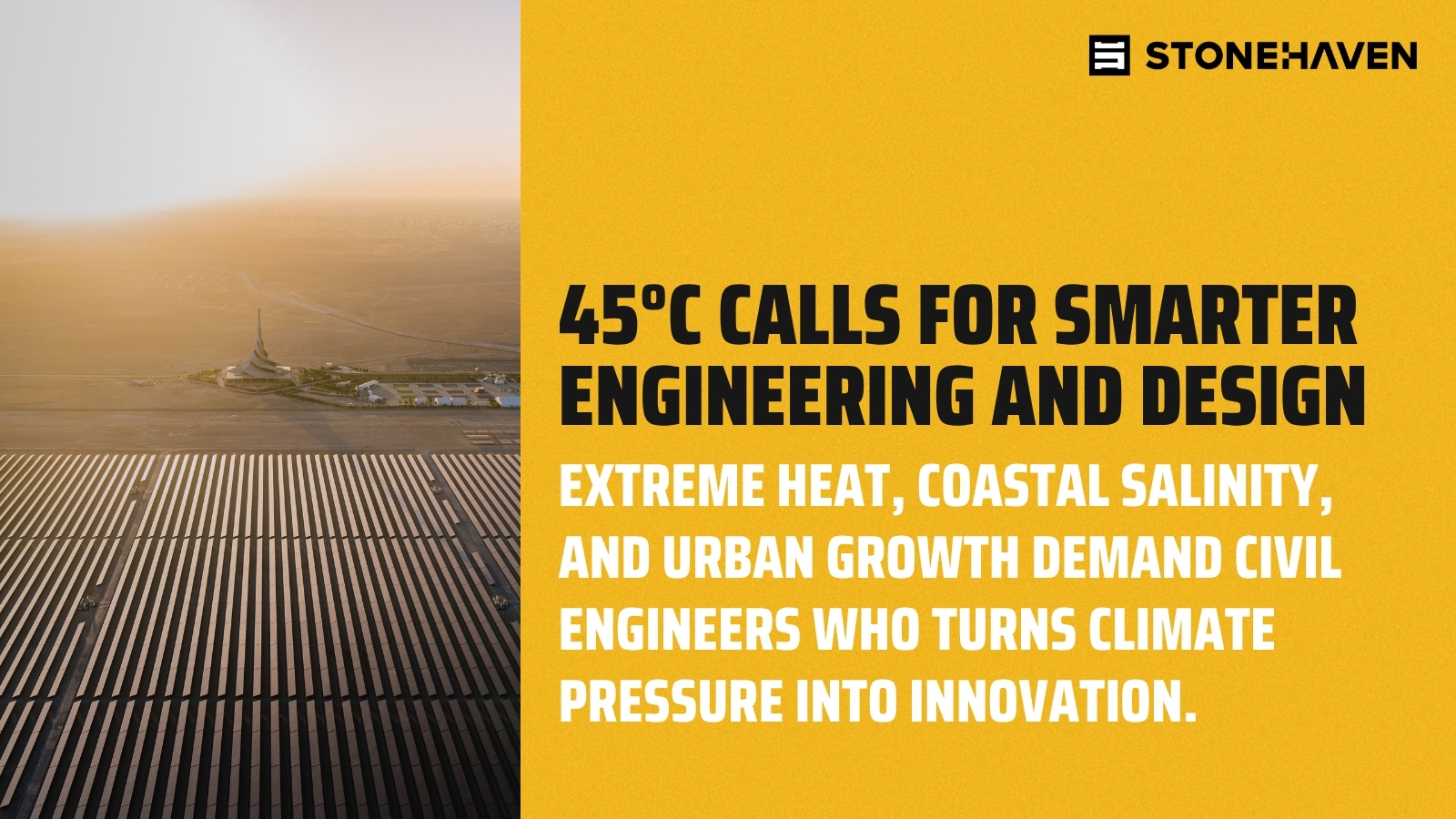
To meet these challenges, engineering teams are adopting advanced tools such as Building Information Modelling (BIM), drone-based land surveying, and AI-powered asset monitoring. A notable example is the Red Sea International Airport’s Private Jet Terminal in Saudi Arabia. Designed as part of a broader sustainable tourism initiative, the project integrated low-impact construction methods with luxury infrastructure and high-performance transport systems. It demonstrates how civil engineering can deliver complex solutions in remote, environmentally sensitive locations while aligning with long-term national development goals.
Today, the role of a site civil engineer extends far beyond traditional construction oversight. It includes digital collaboration, regulatory coordination, and sustainability planning. Whether working on transport corridors, coastal communities, or smart city initiatives, civil engineers across the region are solving complex challenges while shaping the resilient cities of tomorrow.
What Does a Civil Engineer Do on a Daily Basis?
Civil engineers are not only builders of structures but orchestrators of complex systems that make modern cities function. Their importance in the Middle East is especially pronounced, where rapid urbanisation, climate extremes, and large-scale national visions place civil engineers at the core of development. Understanding the roles and responsibilities of civil engineers reveals just how essential they are to the region’s growth and sustainability.
● Site Evaluation and Preparation - One of the first responsibilities of a civil engineer on any project is site evaluation and preparation. This involves assessing soil conditions, water tables, topography, and environmental impact. A proper evaluation can determine whether a proposed design is feasible or requires modification. In the Middle East, with its saline coastal zones and shifting desert terrain, this step is critical for long-term structural integrity.
● Design Interpretation - Once a site is approved, civil engineers take charge of design interpretation and technical translation. They convert architectural concepts into structural and infrastructural realities. This includes selecting appropriate materials, defining load paths, and designing systems for drainage, water supply, electrical conduits, and transportation access. In regions with strict planning regulations like Dubai and Abu Dhabi, engineers must ensure that every design detail aligns with local codes and global standards.
● Site Coordination - Civil engineers are also responsible for project coordination and site execution. This includes supervising construction activities, scheduling, and ensuring that multiple teams work in alignment. A site civil engineer, in particular, acts as the direct link between the office and the field, overseeing on-the-ground operations, managing subcontractors, addressing daily site issues, and reporting progress to stakeholders.
● Resource Management - Another crucial responsibility is cost estimation and budget management. Engineers must assess materials, labour, and equipment needs to develop accurate budgets and timelines. In mega-projects, small cost overruns can translate into millions of dollars, making precision a critical skill.
● Risk assessment and safety management - This is a major part of the job. This includes identifying potential hazards—ranging from structural failures to extreme weather—and implementing strategies to mitigate them. In the Middle East, where high temperatures can affect concrete curing and worker safety, engineers must plan around seasonal risks and incorporate materials that withstand environmental stress.
Beyond these technical roles, today’s civil engineers are also expected to drive sustainability and innovation. With growing emphasis on green building, low-carbon materials, and water-efficient infrastructure, engineers must understand and apply environmental strategies that reduce a project's ecological footprint. This also includes using digital tools like Building Information Modelling (BIM), GIS systems, and AI-driven design software to streamline project delivery.
Whether they are planning road networks, supervising tower foundations, or optimising site logistics, the modern civil engineer plays a foundational role in shaping the success of construction projects.
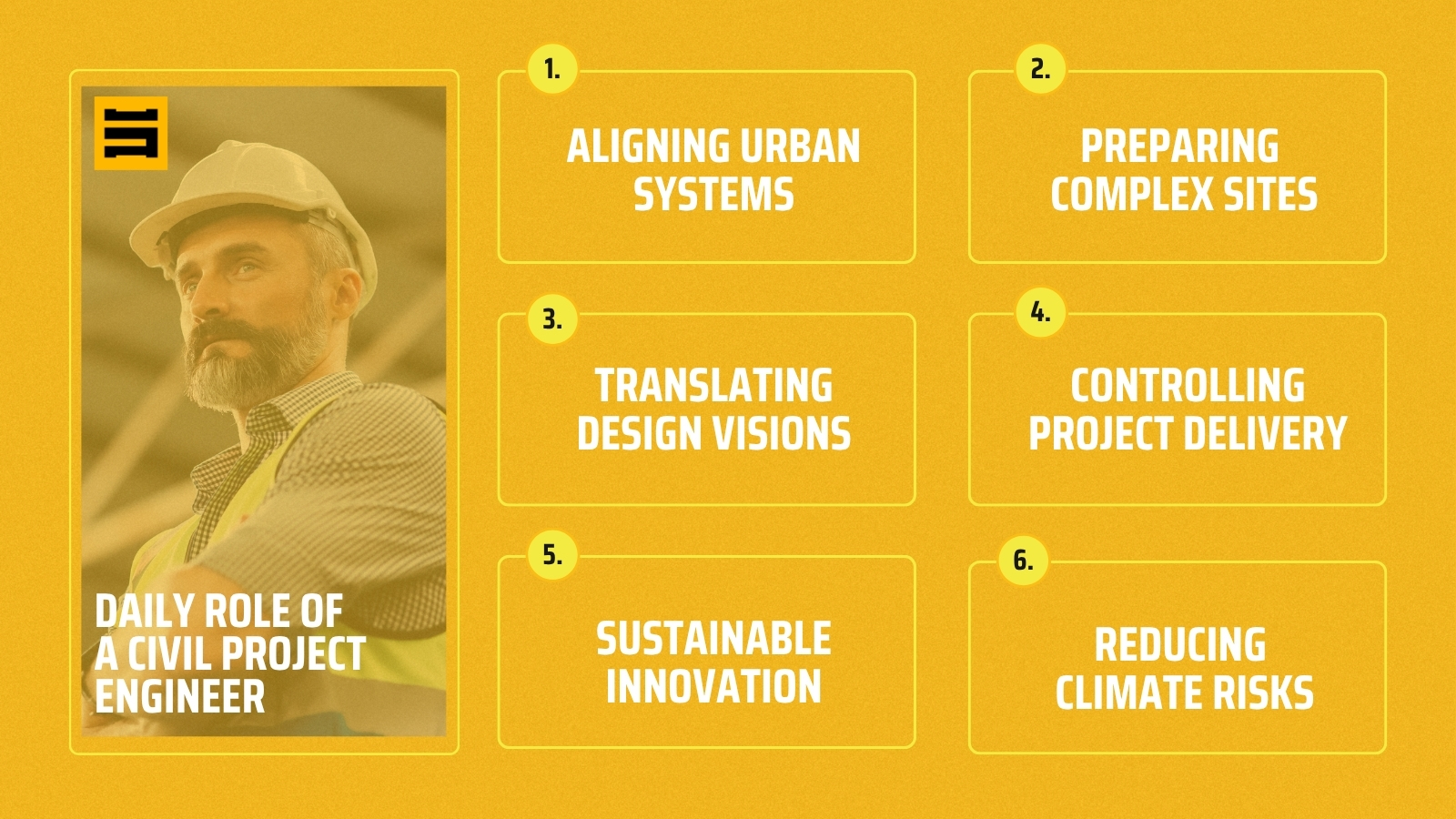
What Technical Skills Does a Civil Engineer Have to Cover?
As the Middle East undergoes rapid urban transformation, the role of the civil engineer has become increasingly central to delivering complex, high-stakes construction projects. This is especially true in the UAE, where high-rise towers, artificial islands, and transport megastructures demand precision, adaptability, and technical excellence.
Civil engineers working in the UAE are responsible for managing a project from the ground up. Their responsibilities begin with site preparation and extend through to structural completion. A typical site civil engineer oversees daily operations, ensures that work aligns with approved engineering drawings, and coordinates with subcontractors to maintain schedule, safety, and quality standards. In environments like Dubai or Abu Dhabi, where construction is fast-paced and highly regulated, engineers must also respond quickly to unforeseen challenges such as material delays, climate constraints, and compliance checks from municipal authorities.
The technical scope of the role is broad. Civil engineers must be proficient in structural analysis, geotechnical evaluation, and material behaviour under local climatic conditions. These include challenges such as thermal expansion, salt corrosion, or ground settlement. They regularly work with tools such as Total Stations and GPS for site layout, and increasingly with digital platforms like Building Information Modelling (BIM) and Common Data Environments (CDEs) for collaborative design and coordination. A strong understanding of load-bearing design, concrete mix design, soil mechanics, drainage systems, and temporary works is essential.
In addition to site execution, civil engineers handle documentation, procurement scheduling, method statements, risk assessments, and coordination with mechanical and electrical teams to ensure integrated delivery. Communication with consultants, local planning departments, and utility authorities is a critical part of the job, especially for engineers leading infrastructure, transport, or public works projects.
Given the level of expertise and responsibility required, civil engineering remains one of the most stable and well-compensated professions in the region. While salaries vary based on experience, project type, and employer, engineers in the UAE generally benefit from tax-free income and competitive benefit packages. With growing demand for talent across both public and private sectors particularly in areas such as green infrastructure, smart cities, and sustainable transport, civil engineers are well-positioned for long-term career growth in the Gulf.
Whether managing the foundation of a new commercial tower, supervising coastal protection works, or coordinating underground utilities for a transit line, civil engineers play a vital role in shaping the UAE’s future. Their work translates visionary plans into physical reality, one carefully measured step at a time.
What are the Hardest Things About Civil Engineering in the Middle East?
The Middle East has become a proving ground for some of the most ambitious construction projects on the planet. From ultra-modern skylines to expansive transportation corridors, the scale of ambition is unmatched. Yet behind every headline-grabbing structure lies a network of challenges that civil engineers must navigate with precision, adaptability, and collaboration.
Civil engineers working in the region face a unique blend of environmental, technical, and cultural demands. The extreme climate is perhaps the most visible hurdle. With temperatures soaring above 45°C during peak summer months, construction schedules must be carefully planned around worker safety and material performance. Concrete curing, for instance, can be compromised without strict temperature control, prompting the use of cooling techniques, early morning shifts, and thermal-resistant materials.
- Cultural diversity presents another layer of complexity. On any given site, it's common to find teams comprising over 20 nationalities, each bringing different work styles, communication norms, and expectations. To avoid misunderstandings and ensure efficiency, civil engineers must foster inclusive site cultures, implement multilingual documentation, and develop clear protocols for communication and reporting.
- Regulatory navigation is also a critical responsibility. Every emirate in the UAE, for example, has its own building codes, permitting procedures, and compliance requirements. Engineers must work closely with local authorities to align with municipal regulations while staying on schedule. This requires both technical expertise and a strong grasp of bureaucratic processes.
- At the same time, the rapid pace of innovation in the region has created pressure for continuous upskilling. Technologies such as Building Information Modelling (BIM), AI-driven safety systems, and even 3D-printed concrete elements are becoming part of mainstream project execution. Engineers are expected not just to use these tools, but to integrate them into workflows that still depend on traditional site practices.
Despite these hurdles, the Middle East offers civil engineers a rare professional environment. The sheer scale of projects, combined with international collaboration and cutting-edge design, provides unparalleled opportunities for career growth and development.
Solutions to Solve These Challenges in Civil Engineering
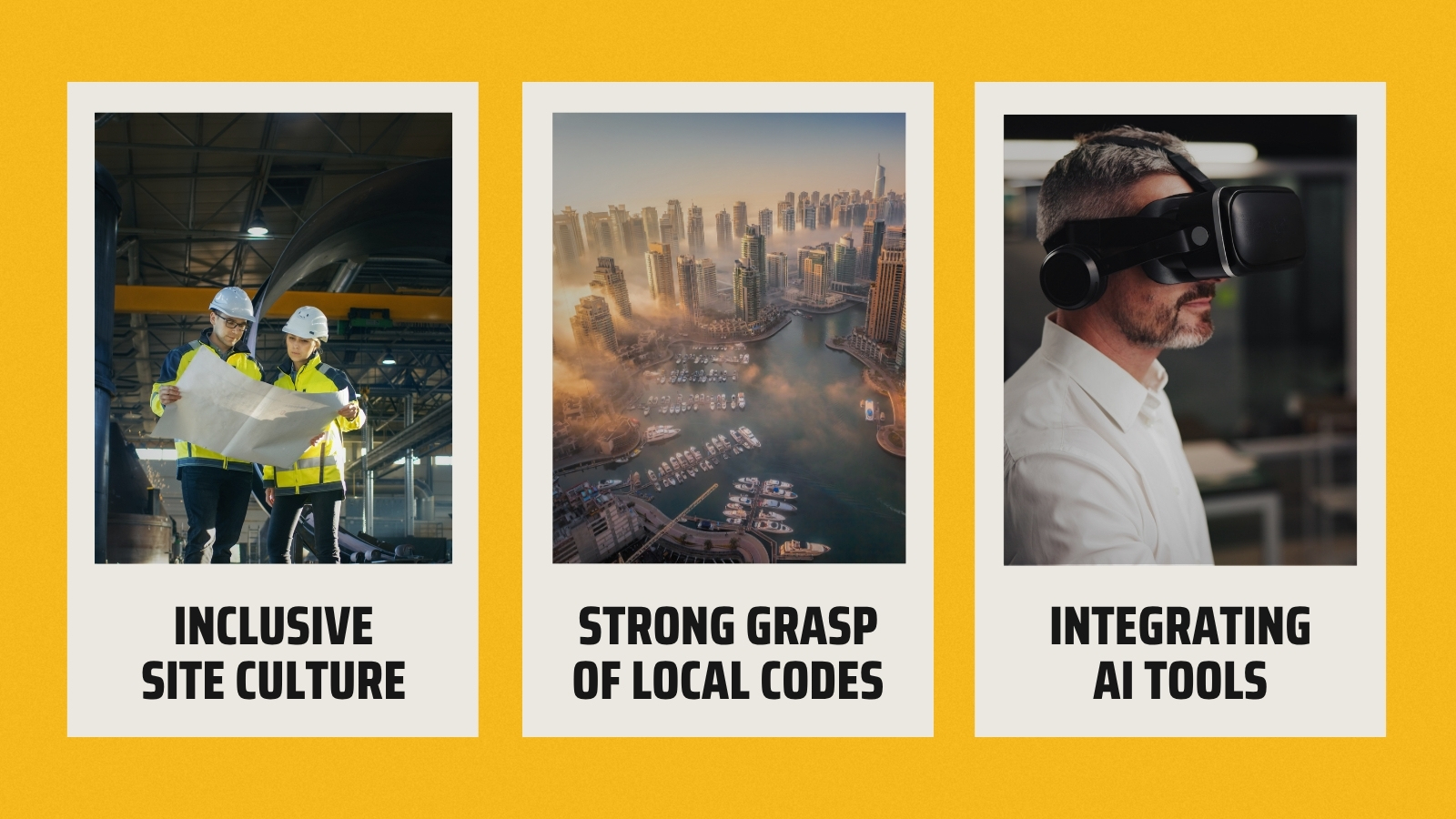
In this environment, the collaboration between civil and structural engineering becomes not only necessary but vital. While civil engineers are responsible for planning and managing the overall infrastructure, such as roads, drainage, site layout, and utilities, structural engineers focus on the strength, load-bearing capacity, and long-term durability of the physical structures themselves. Their roles are interdependent. A structural engineer may determine the wind load tolerances for a tower, but it is the civil engineer who ensures that the soil conditions, foundation design, and water management systems make that tower feasible in the first place.
It is this collaboration that brings complex, high-performance projects like the Red Sea International Airport’s Private Jet Terminal, the Anantara Sharjah Resort and Residences, and the Al Ula Tramway to life. These developments are not just architectural showpieces but also engineering achievements where civil and structural disciplines work in seamless coordination to deliver structural integrity, safety, and long-term urban resilience.
What will the Future of Civil Engineering Look Like in 10 Years?
The next decade will redefine civil engineering as we know it—driven by technology, sustainability, and shifting urban demands. As the construction landscape evolves, so too will the role of civil engineers. At Stonehaven, we believe the future belongs to firms that treat engineering talent not just as a technical necessity, but as a strategic force shaping smarter, faster, and greener infrastructure.
In construction, success depends as much on people as it does on materials or design. Whether you're a private developer breaking ground on a high-rise or a government entity managing large-scale infrastructure, hiring the right civil engineering professionals can determine the outcome of your project. At Stonehaven, we recognise that engineering talent is not just a resource, it's a strategic asset.
Qualified civil engineers bring a depth of expertise that directly impacts every phase of construction in the next coming decade. Their technical knowledge and field experience allow them to make smarter decisions on site, mitigate risks early, and ensure long-term structural integrity. When engineers are involved from the outset, planning becomes more precise and execution more efficient. This can lead to significant reductions in delays, cost overruns, and rework, all of which are common pain points on large-scale builds.
An experienced engineer also understands the intricacies of UAE compliance frameworks. From navigating local municipal approvals to aligning with region-specific environmental regulations, their familiarity with the system helps accelerate approvals and prevents costly legal setbacks. Furthermore, as sustainability becomes a core requirement in modern construction, skilled civil engineers are now expected to apply eco-conscious practices. This includes selecting green materials, working with LEED-certified designs, and integrating smart infrastructure systems that future-proof developments.
Conclusion
Working as a civil engineer in the Middle East’s construction sector is more than just a career, it’s a calling. It requires a combination of technical expertise, innovative thinking, and cultural awareness to help build cities that are designed to endure for generations.
Whether you’re navigating the evolving responsibilities of a site civil engineer, adapting to new project delivery methods, or staying informed about regional job trends, civil engineering in this region offers more than just a paycheck. It offers the chance to contribute to infrastructure that defines national identity and future resilience.
For aspiring professionals and hiring firms alike, the opportunities in this field are as expansive and dynamic as the landscapes being transformed.
About us
At Stonehaven, we connect the brightest minds in civil engineering with the most transformative construction projects across the Middle East. Our offering is comprehensive. We provide end-to-end engineering recruitment for both permanent placements and contract assignments, ensuring that clients have the right expertise exactly when and where it’s needed.
Our project-based workforce mobilisation services support large-scale initiatives with speed and precision, while our in-depth knowledge of regional compliance and visa requirements simplifies the hiring process for multinational teams.
Whether you're launching a billion-dirham public initiative or a technically complex structural retrofit, Stonehaven brings the industry insight, regional expertise, and professional network needed to support your goals. We don’t just fill roles, we help you build stronger, smarter, and more resilient and competent project teams.
Let’s construct a future together.









